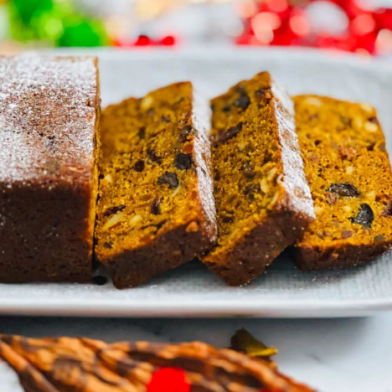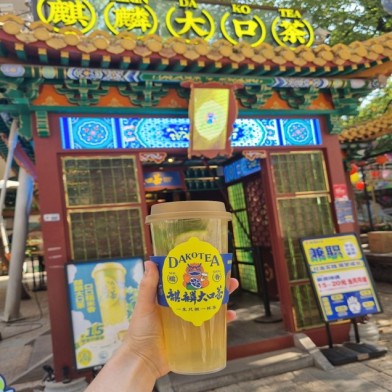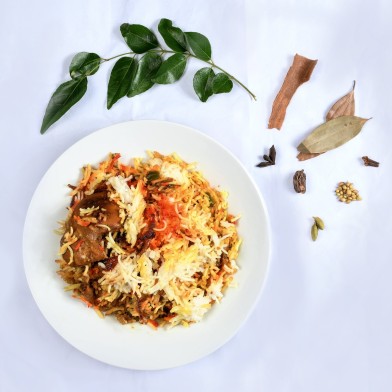I miss the familiar flavours of home. Here in New Zealand, the Indian grocery store is my lifeline. Walking through those aisles, the vibrant rows of spices are a symphony of colour and aroma – garam masala, red chili powder, chaat masala – each one a comforting reminder of home across the vast ocean.
Then, one day, amidst the familiar rows of spices, I spotted a fiery revolution brewing. Nestled amongst the usual suspects, a frozen, deep red chilli unlike any other catches my eye. It’s the Bhut Jolokia, the infamous Ghost Pepper, renowned for its intense heat worldwide.
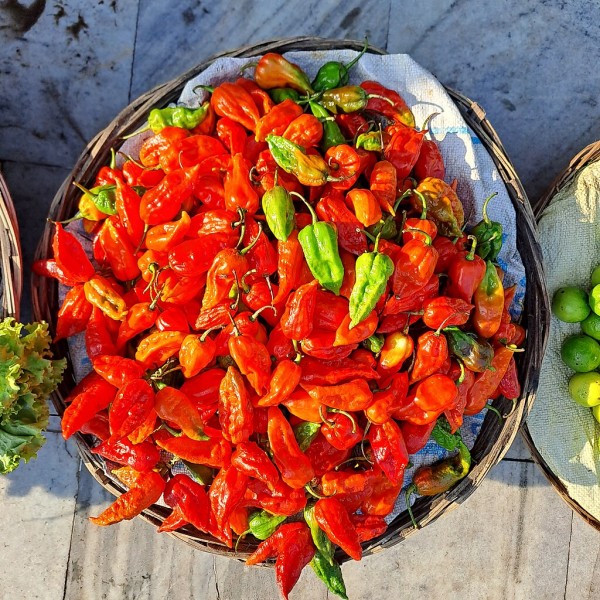
The infamous Bhut Jolokia chilli. Image: Wikimedia Commons
A wide grin spreads across my face. It's a piece of home, a fiery friend from Assam, right here in New Zealand!
It wouldn't be long before this unique chilli pepper from my homeland would become increasingly available. Soon, I started to see Bhut Jolokia not just in this store's freezer section, but also appearing on restaurant menus and even seed packets.
It seemed like interest in Bhut Jolokia was growing in New Zealand.
From Fields of Assam to Global Phenomenon
The year is 2007 - the world is about to be introduced to a small but mighty chilli. The Bhut Jolokia's journey to global fame ignites when researchers at New Mexico State University put it under the spotlight.
Dr. Paul Bosland from the Chile Pepper Institute said that the intense heat concentration of Bhut Jolokia could have significant impact on the food industry as an economical seasoning in packaged foods.

Finding Bhut Jolokia on the shelves of New Zealand stories was an instant connection to home for Subasita Borkakoty (pictured)
Packing a punch over 400 times hotter than Tabasco sauce on the Scoville Heat Unit (SHU) scale, the Bhut Jolokia clocks in at a staggering 800,000 to 1,000,000 SHU.
This fiery reputation, and its subsequent certification by Guinness World Records as the world's hottest chilli pepper, sparks a major online buzz, turning the ghost pepper into a global obsession.
Videos of grown men brought to tears by its heat and online dares on platforms like TikTok and YouTube became legendary.
But for some, the Bhut Jolokia became more than just a food fad. It transformed into a test of spice tolerance, finding its way into unexpected dishes like ice cream or donuts.
In its homeland, however, the Bhut Jolokia is a respected ingredient used in everyday cooking, not a daring challenge and holds cultural significance.
Beyond a Food Fad
In Assam, Bhut Jolokia isn’t just a spice on the shelf; it is a companion woven into the very fabric of our Assamese cuisine. It isn’t something you'd find in an eating competition – it is simply part of everyday cooking.
Imagine the smoky aroma of smoked chicken with dry bamboo shoots, its familiar flavours awakened by a single, fiery touch of Bhut Jolokia.
As a child, my friends and I would often indulge in evening snacks consisting of instant noodles like Maggi and WaiWai, though we were aware of their less-than-healthy reputation. However, we turned these simple noodles into a shared experience by adding Bhut Jolokia peppers, creating a fiery sensation that ignited laughter, induced hiccups and maybe even brought a tear or two to our eyes (along with some runny noses!).
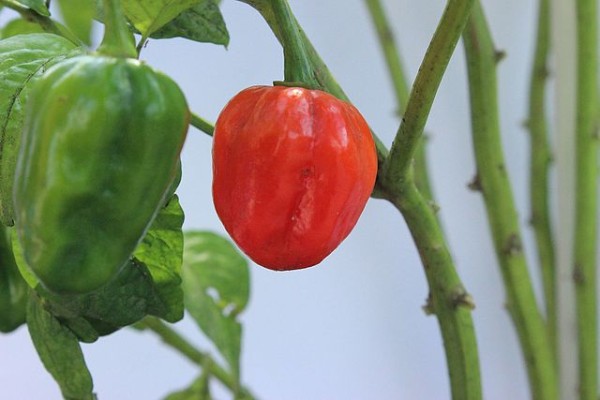
Now, you can even find Bhut Jolokia seeds in New Zealand to grow your own 'ghost chillis'. Image: Wikimedia Commons
In Assamese homes, a jar of Bhut Jolokia pickle was always around, taking even the simplest meal of rice and dal to a whole new level.
But the heat wasn't all. Bhut Jolokia held a deeper significance.
A Legacy
Bhut Jolokia has been a part of Assam's history for as long as anyone can remember.
According to folklore, centuries ago, when wild elephants roamed free, threatening crops and homes, villagers used their ingenuity. They built fences laced with Bhut Jolokia, a fiery deterrent that kept these giant herbivores at bay. It was a testament to the power of this little pepper.
Our grandparents revered Bhut Jolokia for more than its heat. They used it as a natural remedy for everything from arthritis to stomach troubles. Even today, people in northeast India utilise Bhut Jolokia as an herbal medicine, a testament to the knowledge passed down through generations.
Researchers are actively exploring these potential health benefits even today.
Assam's climate is perfectly suited for Bhut Jolokia. The region experiences warm temperatures, high humidity and ample rainfall throughout most of the year. These conditions are ideal for the growth of chilli plants, allowing them to thrive and produce its characteristic heat.
Lost in Translation
Bhut Jolokia has many names across India, like Naga Jolokia in Nagaland, Bih Jolokia (Poison Chilli) in Assam, Oo-morok (Tree Chilli) in Manipur.
But its Assamese name, Bhut Jolokia (ভোট জলকীয়া), holds a surprising secret. Western translations often interpret Bhut (ভূত) as ghost, conjuring images of a hauntingly spicy experience. This is where the name Ghost Pepper originated.
This, however, is a delightful case of lost in translation. Even if you don't know the Assamese language, you can understand that the second character, ট, is different from the character ত. This slight difference holds the key to the true meaning.
In Assamese, "Bhot" (ভোট) refers to Bhutan, Assam's neighbour. Historically, Assamese people obtained these chilies from Bhutanese traders, who likely cultivated them in the border regions between Bhutan and Assam.
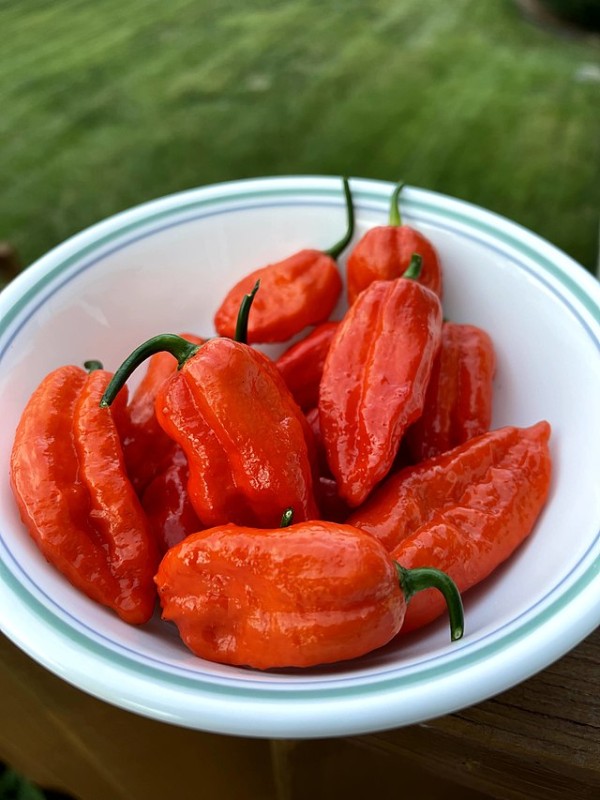
Image: Wikimedia Commons
A Bridge Between Cultures
In 2023, according to Volza's India Export data, there were 631 shipments of Bhut Jolokia exported from India. These shipments involved 36 Indian exporters and 140 buyers.
India exports most of its Bhut jolokia to United States, Canada and Switzerland and is the largest exporter of Bhut Jolokia in the world. While Bhut Jolokia once held the title of hottest chilli pepper, it has since been surpassed by even fiercer contenders such as Trinidad Moruga Scorpion (2 million SHU), Chocolate 7 pot (1.8 million SHU), etc.
Today, Bhut Jolokia is a global food star, its heat is a prized ingredient in international cuisines.
Yet, in Northeast India, it's a fiery thread woven into the way of life, a bridge between cultures, and a symbol of the ingenuity of a people who have harnessed nature's fire for generations. So next time you see Bhut Jolokia on a shelf far from India, see it for what it truly is: a taste of tradition, a symbol of resilience, and a spark of heritage. This fiery ambassador reminds us that even the hottest flames can bring people together, one delicious (and perhaps tear-jerking) bite at a time.
- Asia Media Centre
